EARMOLD SELECTIONS
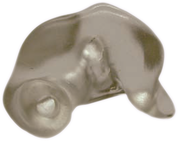
Receiver (#1 Regular)
Receiver (#1 Regular)
This mold style is characterized by a special receiver ring or clip that retains the external receiver of a body aid. The mold fills all the contours of the external ear for a tight seal. This type of mold can be made from hard or soft materials.
This mold style is characterized by a special receiver ring or clip that retains the external receiver of a body aid. The mold fills all the contours of the external ear for a tight seal. This type of mold can be made from hard or soft materials.
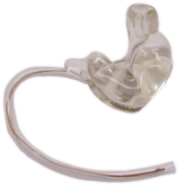
Receiver with Hook
Receiver with Hook
This type was developed to retain a receiver and mold in the ear of a client where the external ears cartilage will not hold the mold in place. The most common application is small children.
This type was developed to retain a receiver and mold in the ear of a client where the external ears cartilage will not hold the mold in place. The most common application is small children.
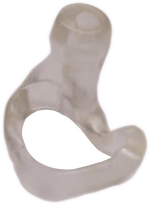
Skeleton (#2 Skeleton)
Skeleton (#2 Skeleton)
This is the most universal mold made. The design gives a good seal, and the cosmetic design is acceptable to most clients. Most acoustical options can be fitted into this physical shape.
This is the most universal mold made. The design gives a good seal, and the cosmetic design is acceptable to most clients. Most acoustical options can be fitted into this physical shape.
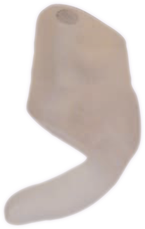
Canal Lock (#3 Canal)
Canal Lock (#3 Canal)
This mold is a modified canal shape. As you can see, a portion of the lower concha rim has been added to give more retention. The mold still is cosmetically very acceptable.
This mold is a modified canal shape. As you can see, a portion of the lower concha rim has been added to give more retention. The mold still is cosmetically very acceptable.
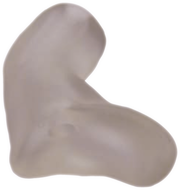
Half Shell #4 Shell Canal
Half Shell #4 Shell Canal
This mold focuses on the very real client/dispenser problem of earmold insertion. Some clients, due to age or manual dexterity, do not easily learn insertion techniques. This mold gives a good acoustic seal and simplifies insertion for the client.
This mold focuses on the very real client/dispenser problem of earmold insertion. Some clients, due to age or manual dexterity, do not easily learn insertion techniques. This mold gives a good acoustic seal and simplifies insertion for the client.
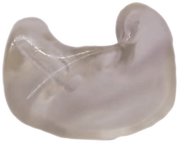
Shell #5 Shell
Shell #5 Shell
This mold was created from the design of the receiver mold, but with tubing. The receiver plate are of the mold has been belled for cosmetic reasons. This mold will work in all cases because of its seal and design. Most acoustical options can be used with this physical shape.
This mold was created from the design of the receiver mold, but with tubing. The receiver plate are of the mold has been belled for cosmetic reasons. This mold will work in all cases because of its seal and design. Most acoustical options can be used with this physical shape.
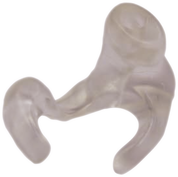
Semi-Skeleton #6 Half Phantom
Semi-Skeleton #6 Half Phantom
This mold is a further reduction of the skeleton style. It again would relate to a problem in the external ear's shape.
This mold is a further reduction of the skeleton style. It again would relate to a problem in the external ear's shape.
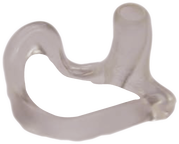
#8 CROS with changeable tube length
#8 CROS with changeable tube length
This physical shape option difference came about when measurement of the earmolds effect showed that the canal length changes for the frequency response.
This physical shape option difference came about when measurement of the earmolds effect showed that the canal length changes for the frequency response.
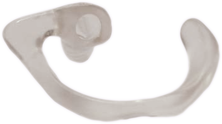
Original CROS 8b CROS
Original C.R.O.S 8B C.R.O.S
Basically, a C.R.O.S mold is a reduction of a skeleton mold in the bridge area and the reduction of the canal portion of the mold so the patients canal is not occluded. Sound can pass around the retaining portions of a C.R.O.S. mold. C.R.O.S. molds are used in C.R.O.S. and C.R.O.S. fittings to significantly reduce an aids response below 1000 Hz. It can be said that a C.R.O.S. mold is the biggest vent.
Basically, a C.R.O.S mold is a reduction of a skeleton mold in the bridge area and the reduction of the canal portion of the mold so the patients canal is not occluded. Sound can pass around the retaining portions of a C.R.O.S. mold. C.R.O.S. molds are used in C.R.O.S. and C.R.O.S. fittings to significantly reduce an aids response below 1000 Hz. It can be said that a C.R.O.S. mold is the biggest vent.
